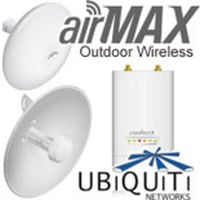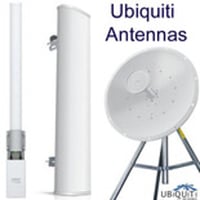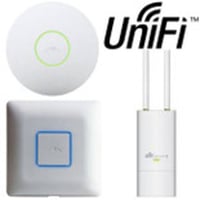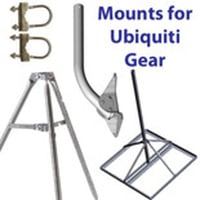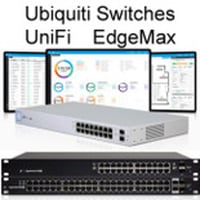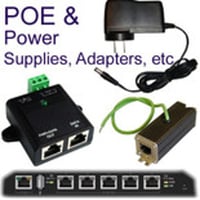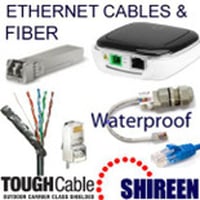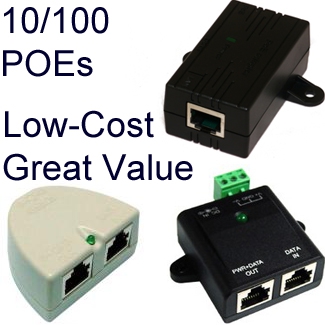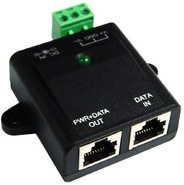POE Injectors / Adapters
Power Over Ethernet:
Power over Ethernet (PoE) is a technology that enables Ethernet cables to function as power cords, at the same time as they are functioning as Ethernet cables: DC electrical current necessary for the operation of one or more network devices flows over the same cable used for network connection. POE injectors make use of free wires in the Ethernet cable to send power.
- With PoE, one does not need power outlets at device locations, such as cameras and wireless routers.
- With fewer cables to install, the network has much greater installation flexibility, easier maintenance, lower cost, and less downtime, than with traditional wiring.
- Passive POE injectors can accept any voltage and inject that voltage into the ethernet cable, for use by the WiFi router, bridge, or CPE.
Non passive injectors are able to transfer power up to 100 meters using active components and on the other hand. The range of passive injectors is around 100-130 ft (up to 40 meters).
Power Over Ethernet: History and Deep Dive into the Technology
Old phone booths had a technology that we can consider as the ancestor of PoE technology. In old telephone booths, power was supplied over the telephone line. Although the technology and structure used are different, the concept of transmitting power over a communication line is very similar.
PoE technology is an efficient technology that made its ancestors proud and offers us the advantages of much easier use...
Power over Ethernet (PoE) injectors/adapters are a popular networking technology that has revolutionized the way power is delivered to network devices. PoE allows network devices to receive both data and power over a single Ethernet cable, eliminating the need for separate power cables and power outlets. This technology has enabled the installation and maintenance of network devices to become more efficient, cost-effective, and flexible.
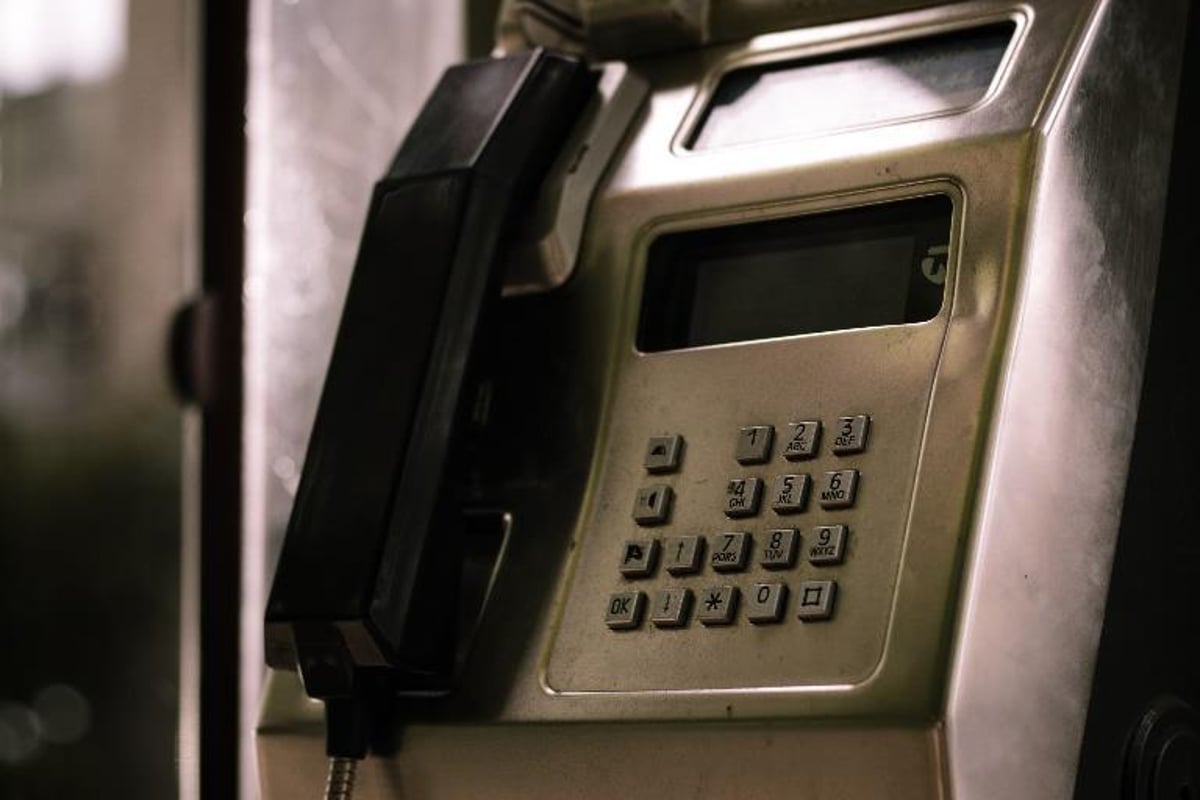
PoE technology was first introduced in 2003 with the IEEE 802.3af standard, which allowed for the delivery of up to 15.4 watts of power to network devices. Since then, the technology has evolved, and PoE+ (IEEE 802.3at) and PoE++ (IEEE 802.3bt) have been developed, allowing for the delivery of up to 90 watts of power to devices.
One of the most significant advantages of PoE technology is its ability to power devices remotely, which has made it a popular solution for network devices that are located in hard-to-reach areas. PoE technology has also made it possible to power network devices in outdoor locations, such as security cameras and wireless access points.
Another benefit of PoE technology is its scalability. With traditional power sources, adding new devices to a network can require significant electrical work and expense. With PoE technology, new devices can simply be plugged in and powered over the existing Ethernet cabling, making it easy to expand a network as needed.
Usage and Purposes
PoE technology is widely used in both residential and commercial settings. In homes, PoE is used to power network devices such as wireless access points, IP cameras, and VoIP phones. PoE is particularly useful for homes that have limited power outlets, making it easy to power devices without the need for additional wiring. PoE is also used in smart homes, allowing homeowners to control and monitor their devices remotely.
In commercial settings, PoE is used to power a wide range of network devices, including security cameras, wireless access points, and IP phones. PoE technology is particularly useful in commercial buildings, where running additional wiring and electrical outlets can be costly and disruptive. PoE technology has also made it possible to install and manage network devices in outdoor locations, such as parking lots and outdoor spaces.
PoE technology is also used in the healthcare industry, where it has enabled the deployment of medical devices and equipment that require power over Ethernet. PoE technology has made it possible to power a wide range of medical devices, including patient monitors, infusion pumps, and portable X-ray machines.
Technical Information
PoE technology works by sending power over the same Ethernet cable that is used to transmit data. The PoE injector/adapter is the device that delivers power to the network device. The PoE injector/adapter is connected to a power source, such as a wall outlet or a power strip, and the Ethernet cable is connected to the injector/adapter and the network device. From a technical standpoint, PoE injectors or adapters deliver power over the Ethernet cable in one of two ways; Mode A / Mode B
Mode A is also known as Alternative A, where the power is transmitted over the same wires as the data signals.
Mode B, also known as Alternative B, uses the spare pairs in the Ethernet cable to transmit power.
PoE injectors or adapters also come with different power ratings, ranging from 15 watts to over 90 watts, depending on the power requirements of the device being powered.
Mid-span and End-span
- Mid-span PoE injectors/adapters are used to add PoE capability to a non-PoE switch.
- End-span PoE injectors/adapters are used with PoE-enabled switches.
Mid-span PoE injectors/adapters are typically less expensive than End-span injectors/adapters and are often used in situations where an existing non-PoE switch is already in place.
A key feature of PoE technology is that it allows for remote power management. PoE switches can monitor the power usage of PoE devices and adjust the power supply accordingly. This allows for more efficient use of power and helps to reduce overall energy costs.
Additionally, PoE technology supports power management features such as scheduled power on/off and prioritization of critical devices.
At its core, PoE operates by injecting a low-voltage DC signal into the Ethernet data stream. This signal is carried over the Ethernet cabling to the PoE-enabled device, where it is separated from the data and used to power the device.
The IEEE 802.3af standard, also known as PoE Type 1, provides up to 15.4 watts of power per port, while the newer IEEE 802.3at standard, also known as PoE Type 2 or PoE+, provides up to 30 watts per port. This increased power capability allows PoE+ to support a wider range of devices, including high-power devices such as wireless access points, PTZ cameras, and video phones.
Surge Protection and Voltage Adjustment
 PoE technology also includes features such as surge protection and voltage adjustment.
PoE technology also includes features such as surge protection and voltage adjustment.
Surge protection is important for devices that are exposed to outdoor environments or other settings where they may be vulnerable to power surges or lightning strikes. PoE surge protectors are designed to protect PoE devices from voltage spikes and surges that can occur in the Ethernet cabling.
These devices typically include a surge arrester and a gas discharge tube that work together to divert excess voltage away from the PoE device and protect it from damage.
Voltage adjustment is another important feature of PoE technology. In some cases, PoE devices may require a specific voltage level to operate optimally. PoE voltage regulators can be used to adjust the voltage supplied to a device to ensure that it receives the correct level of power. This can help to prevent issues such as voltage drops, which can cause devices to malfunction or fail.
Voltage adjustment also allows for the adjustment of the voltage supplied to a device, which can help to optimize power usage and prolong the lifespan of the device.
In Conclusion:
PoE technology is a convenient and cost-effective solution for powering network devices. Its ability to provide power over Ethernet cabling eliminates the need for separate power cables, while its remote power management capabilities and scalability make it an ideal solution for a variety of settings.
With its support for standard PoE and PoE+ capabilities, as well as additional features such as surge protection and voltage adjustment, PoE technology offers a range of benefits that make it an attractive option for powering network devices.

